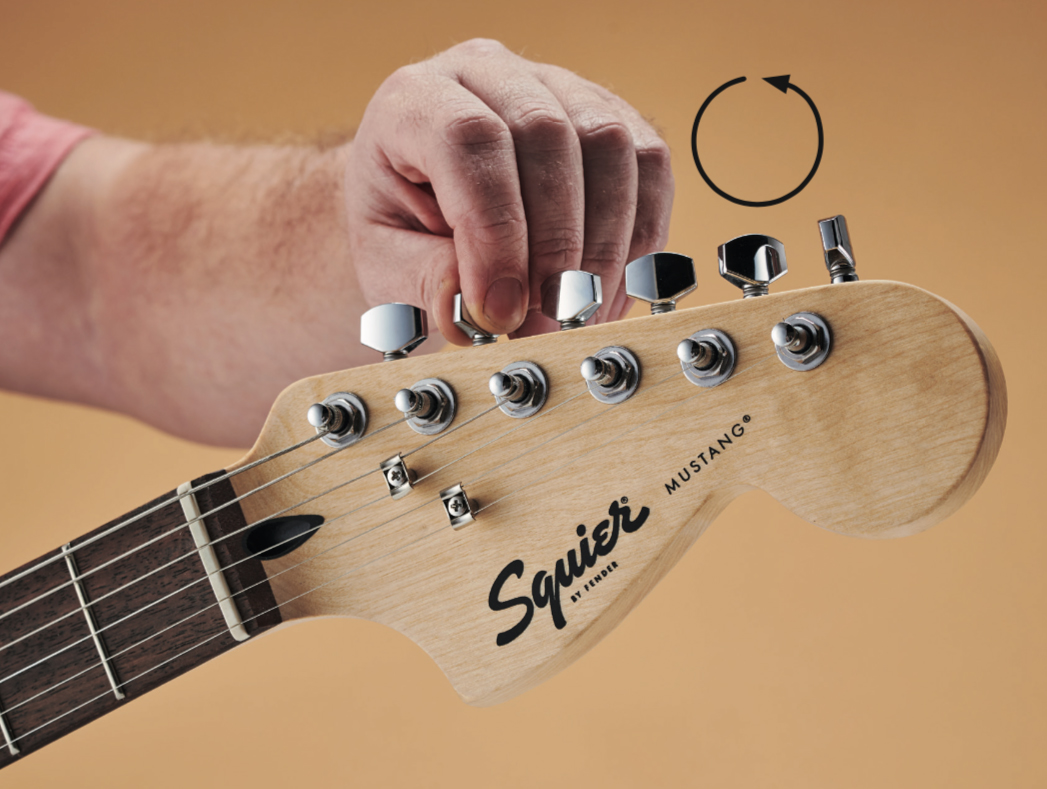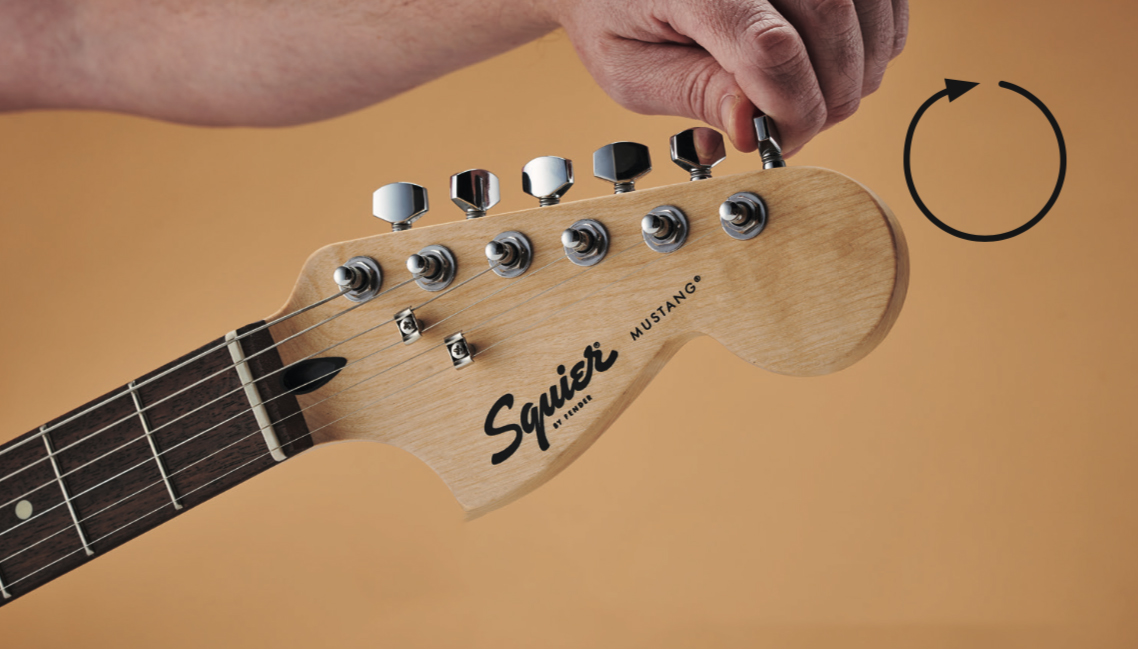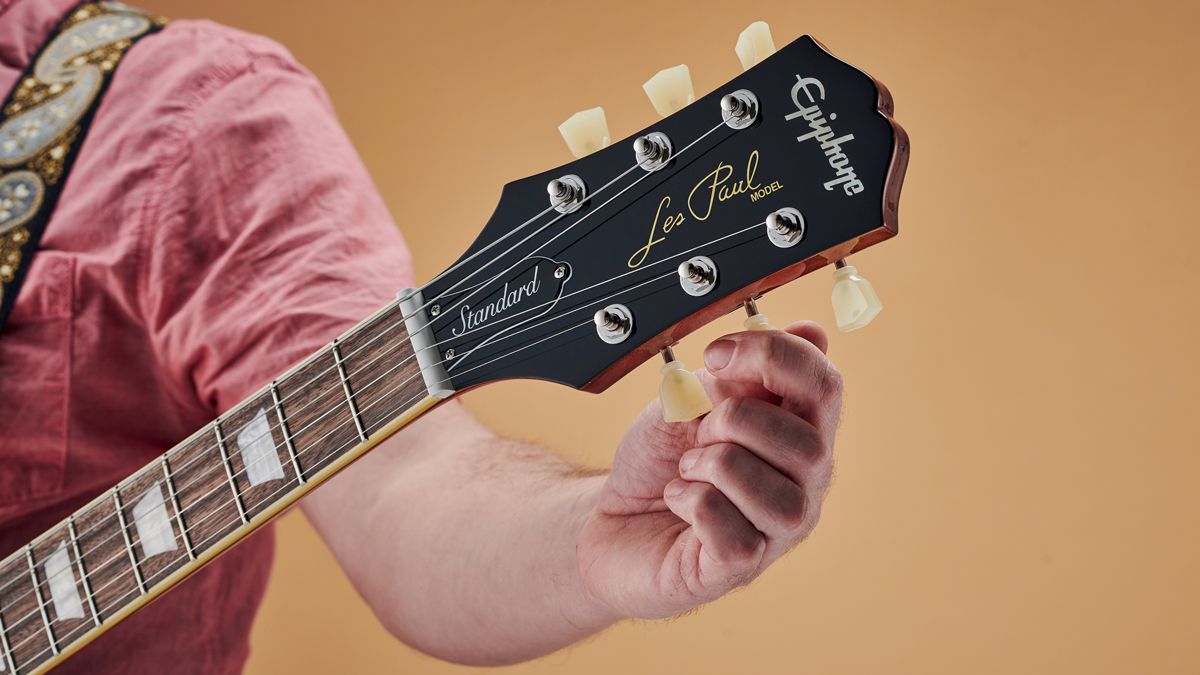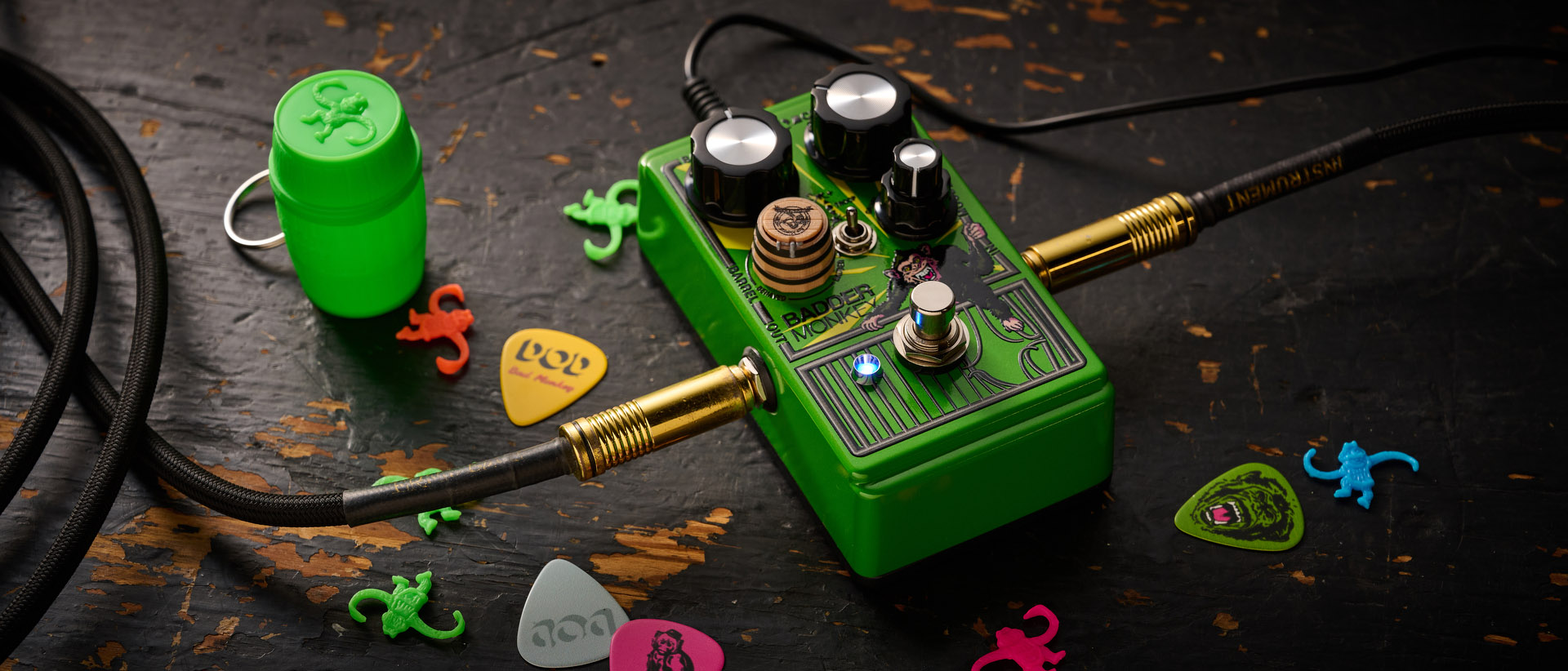How to tune an electric guitar with a tuner
Learn the names of the strings and which way to turn the tuners

Pianos are tuned once or twice a year. Electric guitars are different – they need tuning every day. They can even go out of tune while you’re playing – so one of the first lessons you need to learn is how to tune a guitar.
Armed with a reliable guitar tuner, you’ll find a lot of the guesswork in tuning an electric guitar is taken care of – you simply adjust the tuning pegs based on what the tuner tells you. Here’s what you need to know.
1. String names

You’ll need to know these inside out. From thickest to thinnest, the strings are E, A, D, G, B and E. Think of a mnemonic like “Eddie Ate Dynamite, Good Bye Eddie” to help you remember it, or make up your own one.
2. Using a tuner

Your tuner will automatically detect what note you’re on. In this picture, the red lights are right of centre, telling us the string is a bit too tight (aka sharp) to be an E note. If the red lights were left of centre, obviously that’d be because the string was too loose (aka flat).
Watch out for a ‘#’ symbol or a spot next to the note name. That indicates a sharp note, which means you need to loosen the string a fair bit.
Troubleshooting
If your guitar is really out of tune, it might say a different letter entirely (e.g., you pluck the G string and the tuner says ‘F’). In that case, you just need to know the alphabet.
If the tuner is saying a letter that comes earlier in the alphabet than you’re expecting, the string is a long way flat/loose; keep tuning up until you see the right letter.
All the latest guitar news, interviews, lessons, reviews, deals and more, direct to your inbox!
If the letter comes later in the alphabet, you’re a long way sharp. The exception is if you’re tuning the ‘G’ string and the tuner reads ‘A’: then you’re very sharp.
Now tune up
We’ve covered the basics, now here are the specifics on how to tune a guitar. Remember, there are only three possibilities for whether your guitar is in tune: each string is either flat (too loose), sharp (too tight) or ‘in tune’ (just right).
The gauge on your tuner tells you which it is – you just have to adjust your guitar’s tuning pegs.
3. Six-in-line machineheads, string flat

To raise the pitch (correcting a string that sounds flat), turn the machine head anti-clockwise and tighten the string.
4. Six-in-line machineheads, string sharp

To lower the pitch (correcting a string that’s sharp), turn the machinehead clockwise, lowering the tension in the process.
5. Three-a-side or reverse headstock

If your machine heads point to the floor, the directions are reversed: clockwise to raise the pitch and anticlockwise to lower it.
Chris was Editor of Total Guitar magazine from 2020 until its closure in 2024, when he became Lesson Editor for Guitar World, MusicRadar and Guitar Player. Prior to taking over as Editor, he helmed Total Guitar's world-class tab and tuition section for 12 years, helping thousands of guitarists learn how to play the instrument. A former guitar teacher, Chris trained at the Academy of Contemporary Music (ACM) in Guildford, UK, and held a degree in Philosophy & Popular Music. During his career, Chris interviewed guitar legends including Brian May and Jimmy Page, while championing new artists such as Yungblud and Nova Twins. Chris was diagnosed with Stage 4 cancer in April 2024 and died in May 2025.

